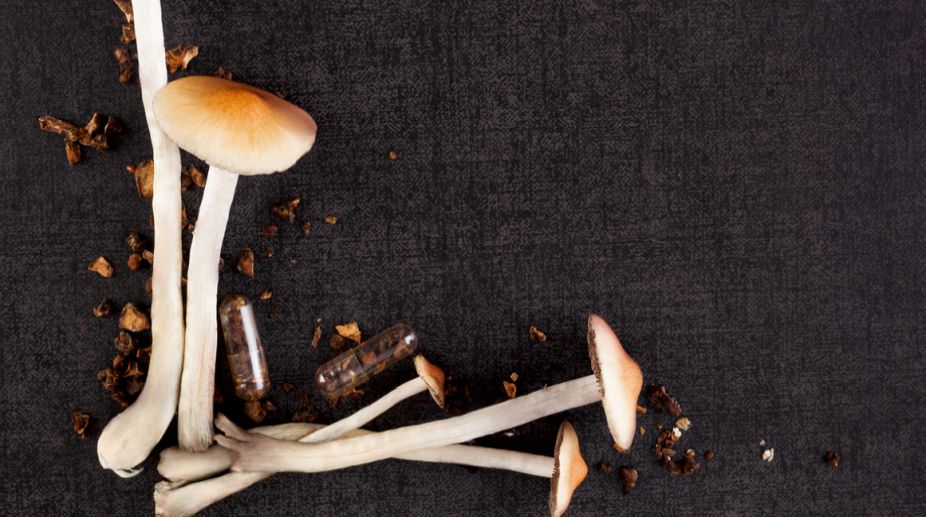According to Amanda Feilding, one tenth of what’s considered a full dose of LSD is enough to make her feel “sparkly.” As the founder and director of the UK-based non-profit Beckley Foundation, Feilding has spent decades collaborating with scientists around the world to better understand how psychedelic drugs like LSD, ayahuasca, and magic mushrooms affect the brain.
Feilding told Business Insider that she experimented with microdosing, or taking tiny doses of psychedelics, in the 1960s as an attempt to increase her creativity and productivity what she refers to as “sparkle.” Nearly 60 years later, the practice has emerged as Silicon Valley’s favourite illegal drug habit, with engineers, programmers, writers, and artists sharing their stories of microdosing. Many people say the practice improves their concentration or creativity; others, like writer Ayelet Waldman, who shared her story with the New York Times, have turned to the regimen as a way to treat symptoms of mental illnesses like depression and anxiety. B
ut no existing study has looked into the science behind microdosing — a gap Feilding and a team of scientists and passionate fundraisers are hoping to fill. Feilding’s new study will begin later this year, looking at 20 participants over the course of four “study days.” Each day, the volunteers in the study will get one of four possible doses of LSD — 0, 10, 20, or 50 micrograms and then do a series of tasks, answer questionnaires, and have their brains scanned.
Each test is designed to see if and how the drugs affect people’s creative and cognitive abilities. The researchers also hope to learn whether micro-dosing affects communication within and between brain networks the same way a full dose of psychedelics has been found to do.
“We want to look to see if we see those changes in cerebral circulation and connectivity and hopefully things like the ‘aha!’ moment that comes with creativity as well,” said Feilding , adding that they hope to see the results as early as the end of the year. For the study, Feilding will be collaborating with London Imperial College psychopharmacologist David Nutt. New York University researchers Stephen Ross and Michael Bogenshutz are also involved in a series of related trials that are currently still in preliminary phases.
“It’s a study I’ve wanted to do for 30 years. I’m very interested in that level of cognitive enhancement which isn’t a full-blown psychedelic state but is a lift in productivity and cognition and amusement or thinking further than one usually does,” said Feilding.
The existing research on psychedelics has been promising so far, but is still in its early stages. Most studies focus on “trip treatment” essentially giving someone a “full” dose of psychedelics so that they trip or hallucinate. Patients in these studies have said the experience was overwhelmingly positive; many describe the trip as one of the most important experiences of their lives. Psychedelic micro-dosing differs from a “trip treatment” in that it involves taking tiny amounts of a psychedelic drug several times over a few days, rather than a single, full dose.
Whereas participants were injected with 75 micrograms of LSD in one study, for example, micro-dosers report taking about 10 micrograms, or roughly one-fifth to one-tenth of a standard recreational dose, once every four days. These levels are intended to be “sub-perceptual,” NYU psychiatrist Stephen Ross tells Business Insider. In other words, they’re too small to cause a trip, but large enough to potential affect thinking and creativity.
Another issue with today’s microdosing trend is that it can be difficult to verify whether the LSD is actually causing the effects that people report and, more importantly, that the drugs people are taking are safe. That’s one of the problems that the current and future studies aim to address. Scientists can’t say for sure what goes on in the brain after a full dose of psychedelics is taken, or precisely why it appears to produce such profound, life-altering experiences. What they do know, David Nutt told Business Insider in January, is that in a psychedelic trip, the normal hubs which control and regulate brain function become disrupted.
There is much greater connectivity parts of the brain that rarely talk to each other. During a psychedelic trip, certain brain circuits are subdued while others get ramped up. The circuit that connects the parahippocampus and the retrosplenial cortex a network thought to play a role in our sense of self, or ego is one that that appears to be subdued during a trip.
And deflating the ego appears to make people feel more connected to the people and environment around them. “The normal sense of self is broken down and replaced by a sense of reconnection with themselves, others, and the natural world,” Robin Carhart-Harris, who conducted the first study that took images of a healthy brain on a trip-inducing dose of LSD, said at a conference in 2013.
(The Independent)











